In Travel Podcast Episode 19 I visit Egypt where I spent a week travelling with a friend who lives in Alexandria. I took a walking tour of the city where many of the houses are crumbling away and where we bumped into a wedding procession hooting horns and letting off fireworks.
We drove west to the popular holiday resort of Marsa Matrouh and then south-west to the desert oasis of Siwa near the Libyan border. I found Siwa to be a truly magical place and we explored the old mud brick fortress of the Shali, visited the ancient tombs at Gebel al-Mawta or the Mountain of the dead and watched the sun set over the lake at Fatnas island.
Podcast: Play in new window | Download
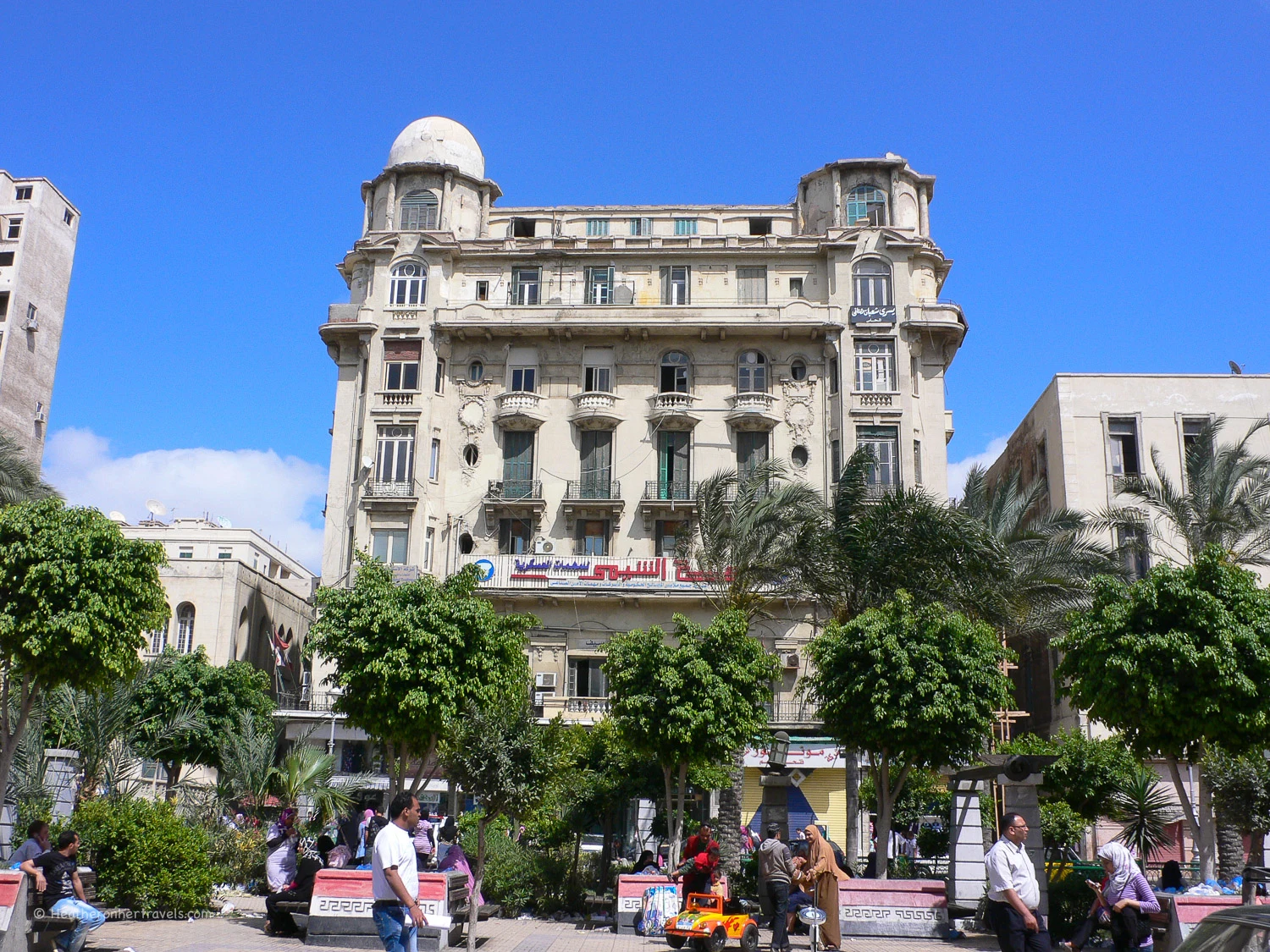
Walking around Alexandria
On my first day in Alexandria, I drove along the corniche that stretches along the coastline, past the Alexandria library which surprised me for being a modern building, not ancient as I had imagined.
An English friend who lives in Alexandria took me on a walking tour of the old Italian, French and Greek neighbourhoods. The impression is of buildings that are peeling and run down. Rents here are fixed and the tenancy can be handed down the generations, so the landlords have no incentive to renovate their properties.
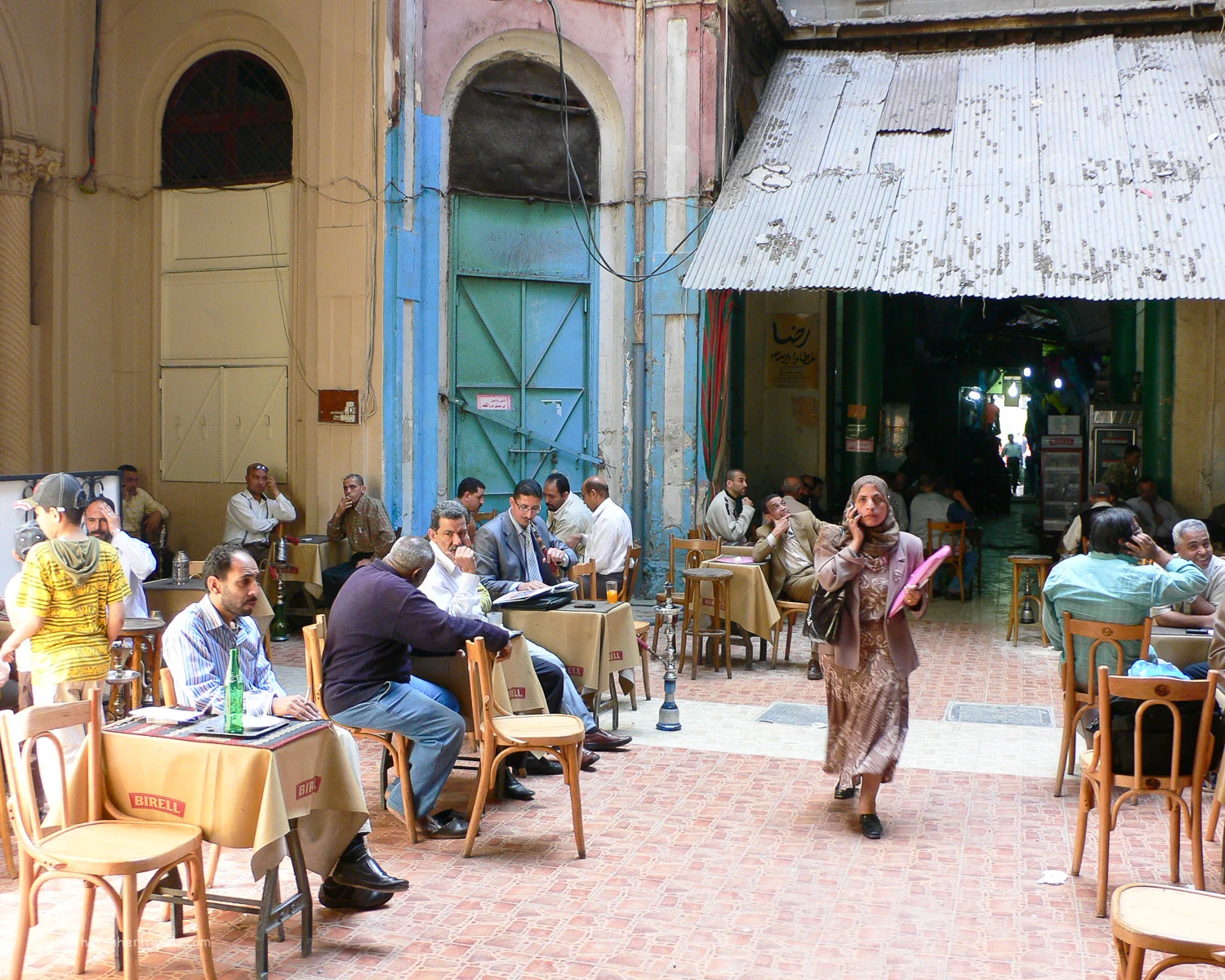
Wandering through the souks, we found a street for every different thing you might want to buy, such as the stationary street and the party decoration street. Alexandrians celebrate all the festivals for each different religion, but they can only start decorating 2 weeks before.
We walked through the fruit market where strawberries were in season and the fresh figs would soon be available in June. In the jewellery quarter most shops were shut, but I still managed to treat myself to a necklace.
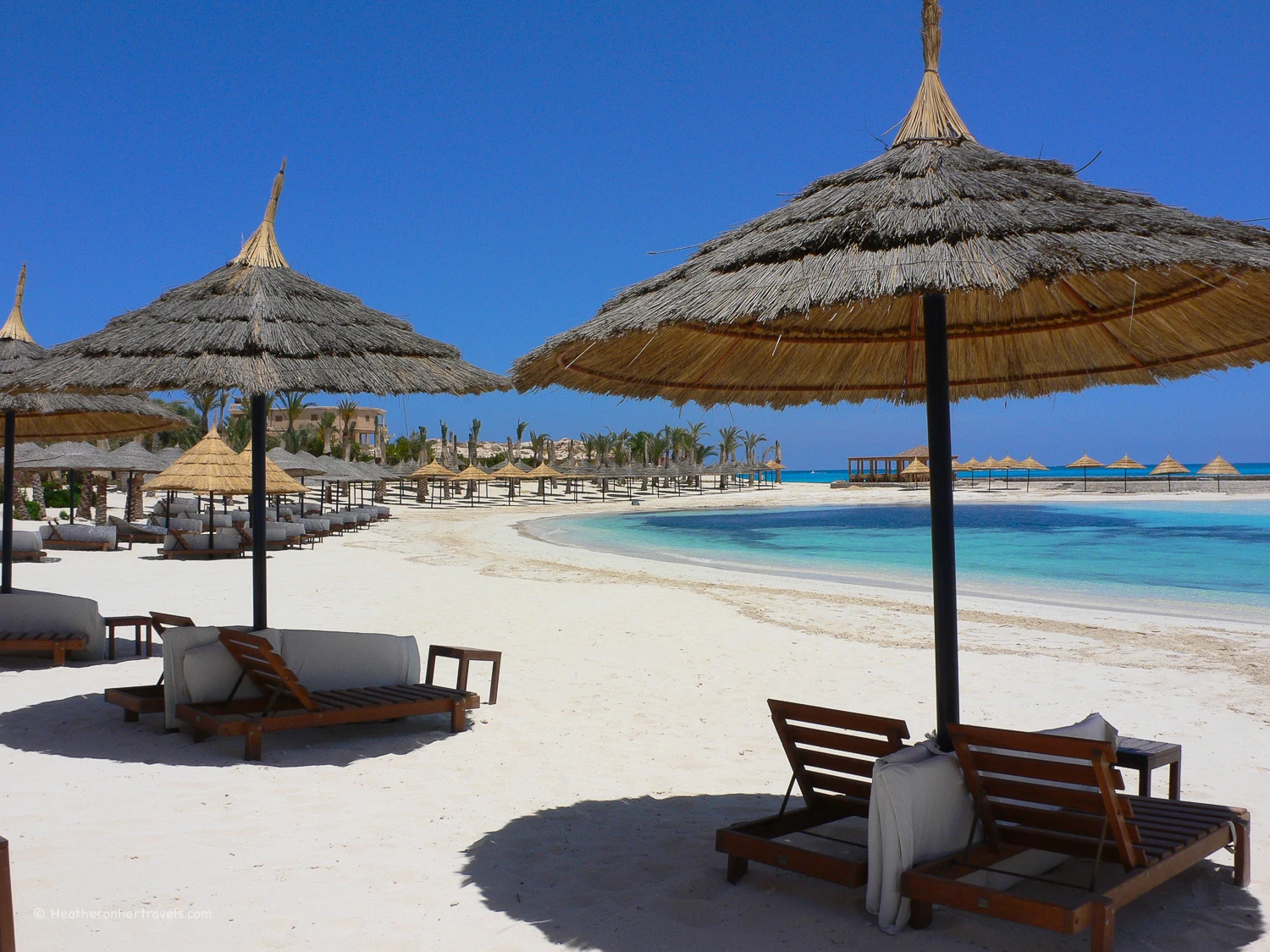
Travelling to Marsa Matrouh
The next day, we drove westwards out of Alexandria along the coast road past a succession of holiday developments. Each was closely built in a different architectural style with only the occasional break through which you could glimpse the sea.
These are popular with Egyptian families although they are only used in the summer months. Personally I preferred it when the developments petered out and we were just driving through the desert.
We passed El Alamein, the site of the famous World War 2 tank battles, passing the Italian, German & British war cemeteries.
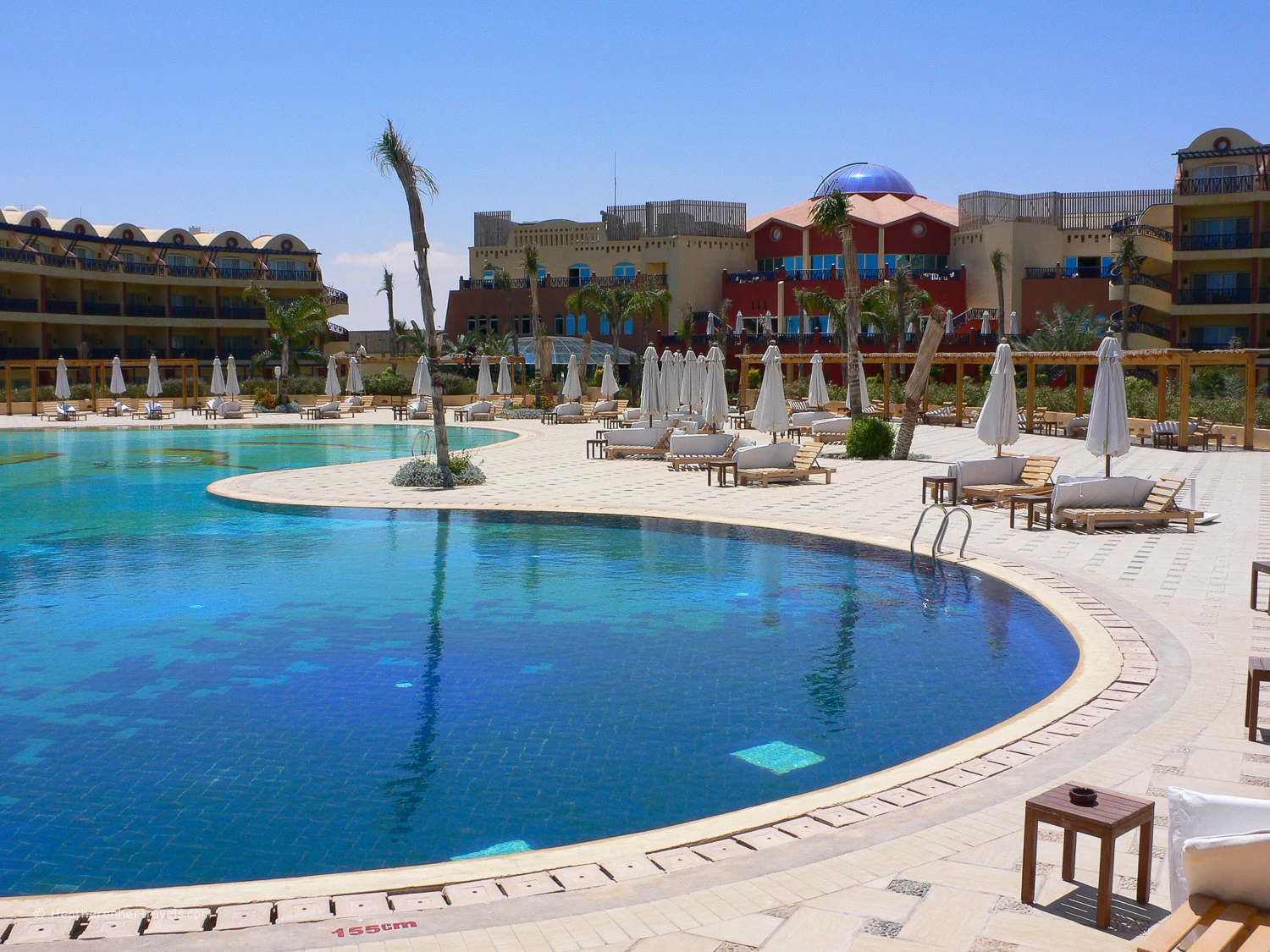
After a few hours we arrived at Marsa Matrouh where everyone in Alexandria comes for their summer holidays with a lot of apartments and hotels. We noticed a few military checkpoints, partly because of the recent revolution and partly because Libya has claims on this part of Egypt so it is treated as a military zone.
Our hotel in Marsa Matrouh
We stayed at the Beau Rivage hotel on the edge of town, with views over the beautifully landscaped gardens and over the pool and towards the sea. The intensely turquoise sea beckoned us for a dip, and we enjoyed relaxing on the sun loungers on the beach.
After a while we felt everything was a bit too perfect so we took a walk beyond the hotel walls and found a bit of normal Egyptian life outside the hotel compound.
We came across a man fishing and another with his children, making a small fire of brushwood on the beach where he was brewing up some tea. He showed us a small fish that he was keeping alive in a rock pool and was planning to cook later.
A taste of the local cuisine
That evening we decided to drive into town for dinner to look for a good fish restaurant. Alexandrians take great pride in their fresh fish. Our Egyptian friend, inspected all the fish that were on display on ice.
After choosing what we wanted, it was weighed and we paid for the weight. We were asked how we liked it cooked – grilled, fried or with a sauce. Of course we over-ordered a huge spread of giant prawns, octopus and fish served with meze and salads.
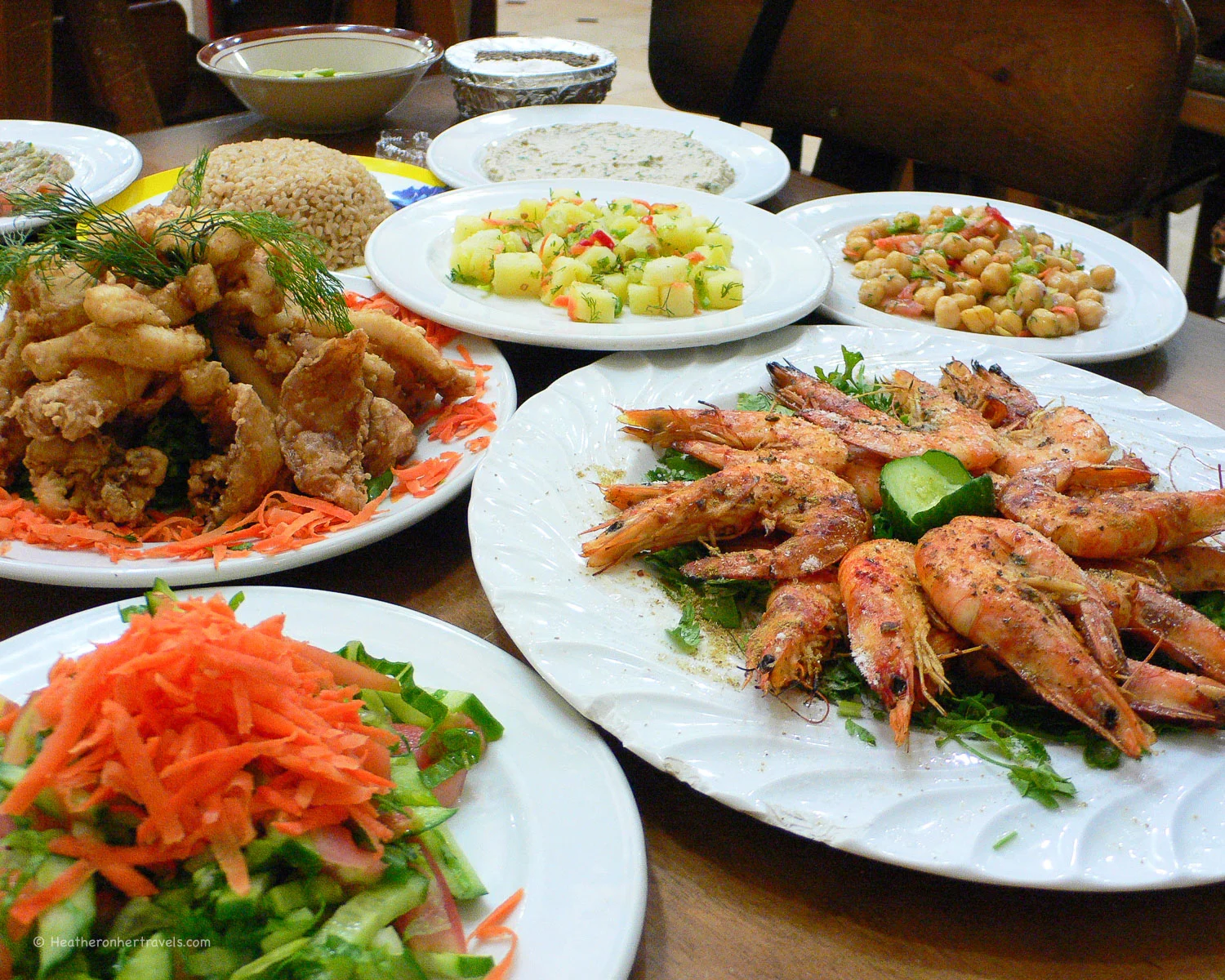
After dinner I was getting internet withdrawal symptoms. We found an internet café which was filled with men watching football and smoking the shisha pipes. I puzzled over the problem of logging on to the Wi-Fi since the password was in Arabic script.
Luckily a Libyan medical student came to our rescue and managed to copy the password from his phone onto my laptop to log in. Meanwhile we drank hibiscus tea and a creamy dessert topped with fruit and coconut.
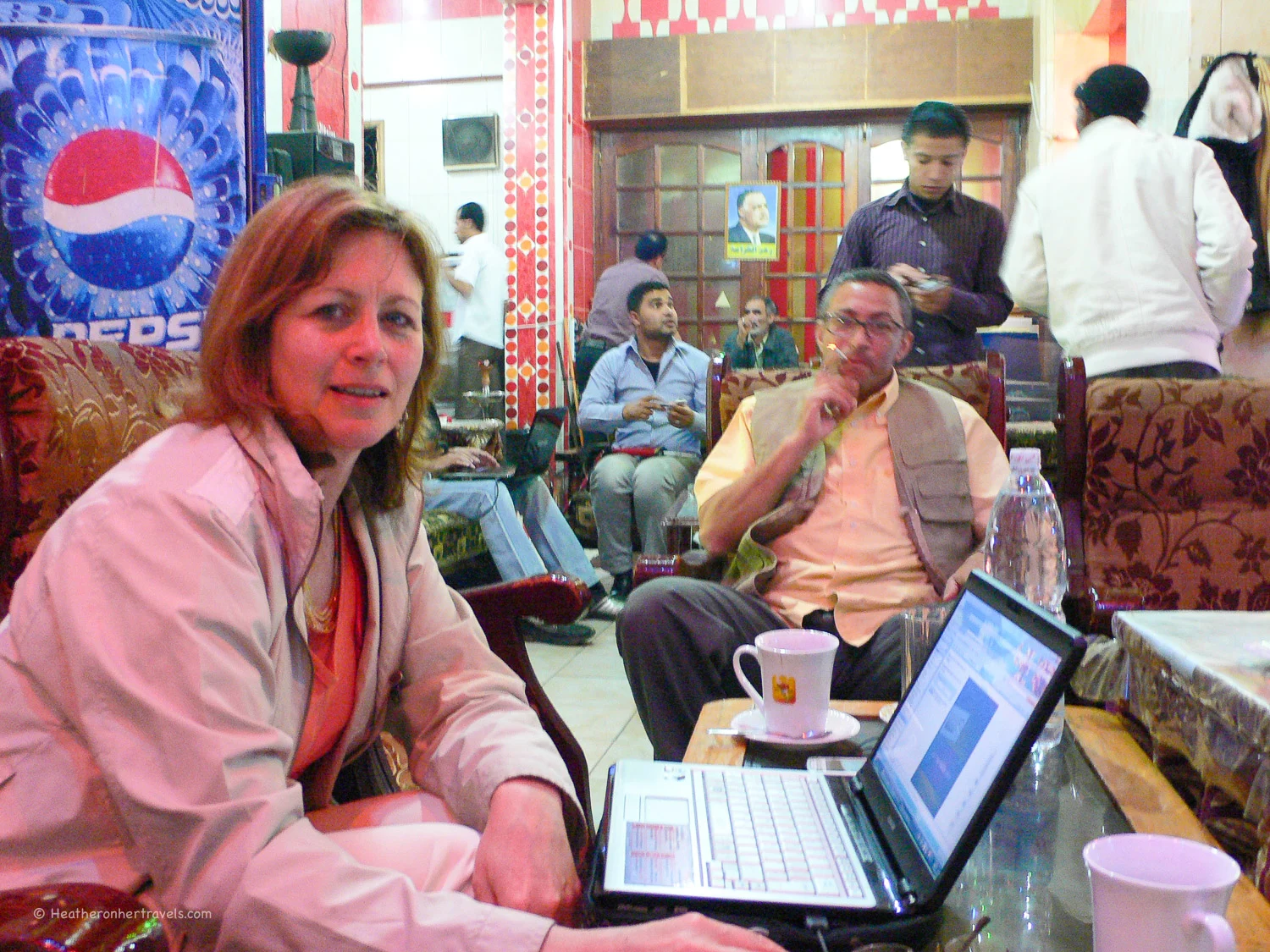
Driving to Siwa
The next day we drove on to Siwa about 3 hours south west of Marsa Matrouh. A gritty desert landscape featured the odd military base and a café half way in the middle of nowhere.
Suddenly the rocky outcrops that surround Siwa rose out of the desert and we saw the lake ahead of us (and it’s not a mirage!). The oasis is based on underground springs that keep it green and enable date palms and olive trees to grow.
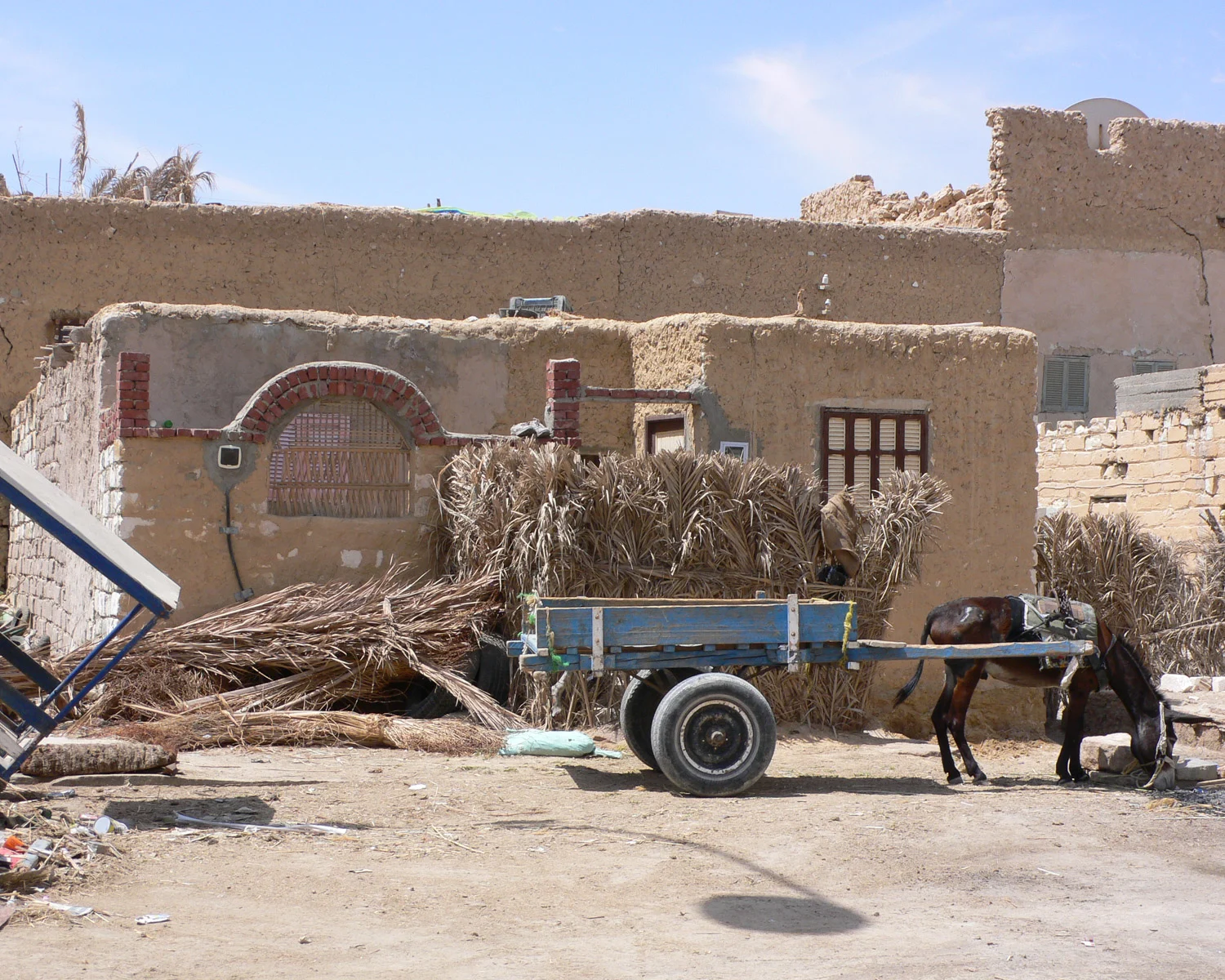
We stayed at the lovely Siwa Safari Gardens Hotel – an oasis within the oasis. There’s a spring-fed pool in the middle of the garden. Our rooms were in the 2 story buildings around the garden.
Traditional buildings in Siwa are made out of rock salt and mud clay. The Siwa people are keen to preserve their culture and the tranquil atmosphere with sustainable tourism. It was not long after the revolution and the Libyan crisis was still going on. There were not many tourists although we felt very safe in Siwa.
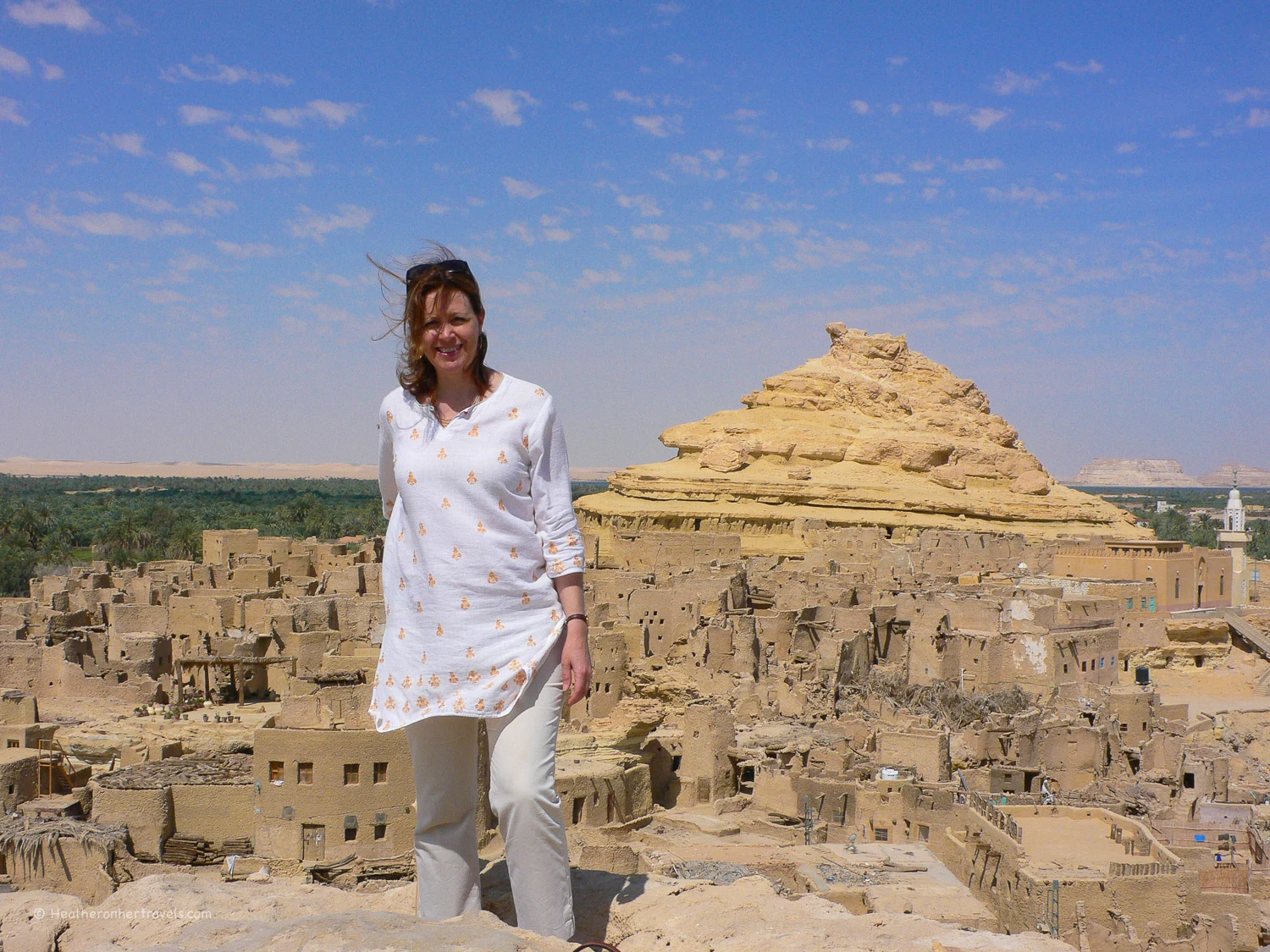
The Temple of the Oracle in Siwa
We visited the Temple of the Oracle, with mud wall construction and the remains of the stone built temple at the top. This offered amazing views towards the lake and over the city.
Then we stopped at Cleopatra’s spring which is a large round pool with clear green water. The bubbles coming to the surface reminded me of the Roman springs at Bath near where I live.
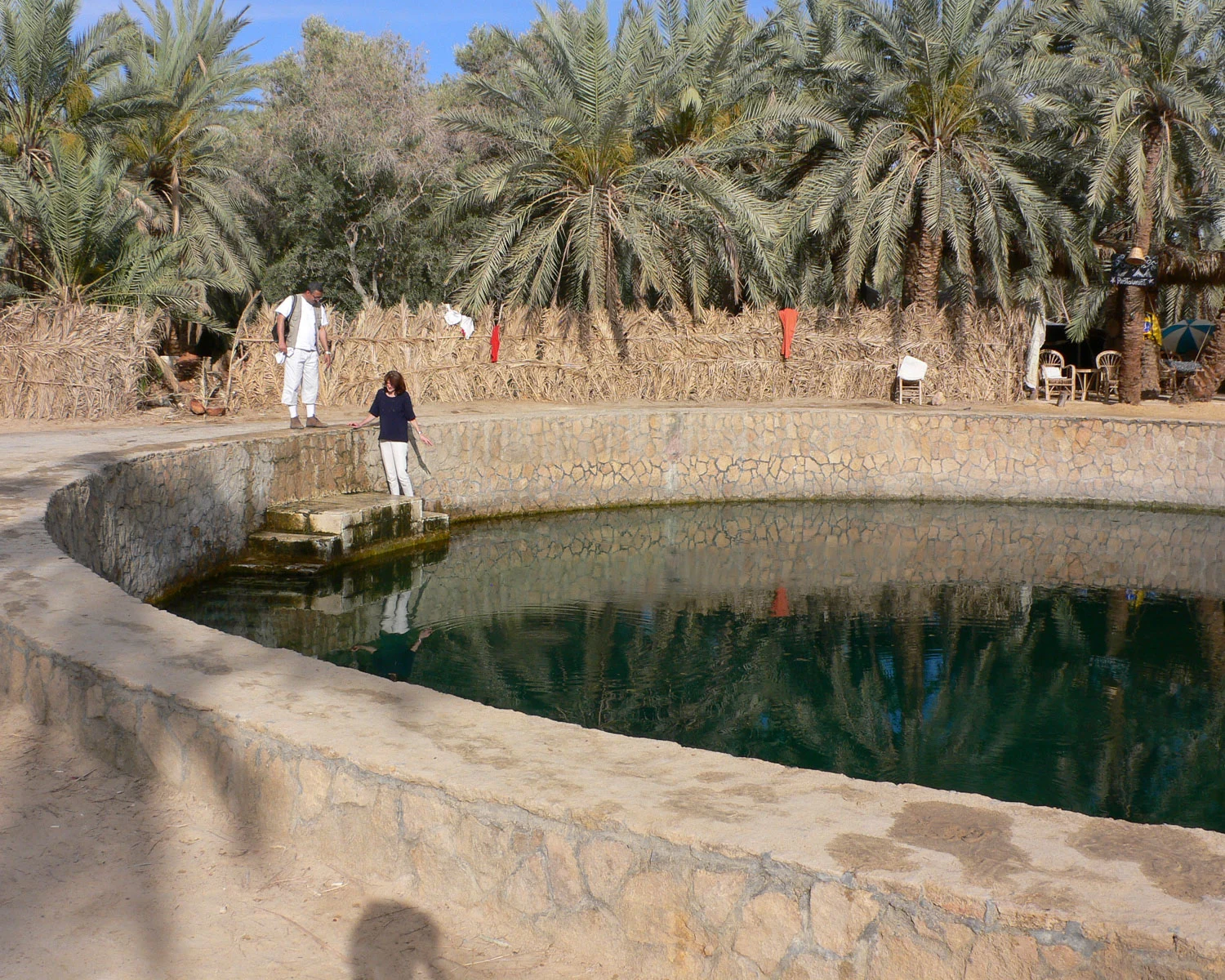
Later we sat and had some lemon grass tea in a café next to the Cleopatra’s spring. We were offered a small fruit the size of a cherry but with the flavour of an apple. Date palms and olives are the main cash crops in Siwa. Vegetables can also grow here but they are sold locally as they would cost too much to transport.
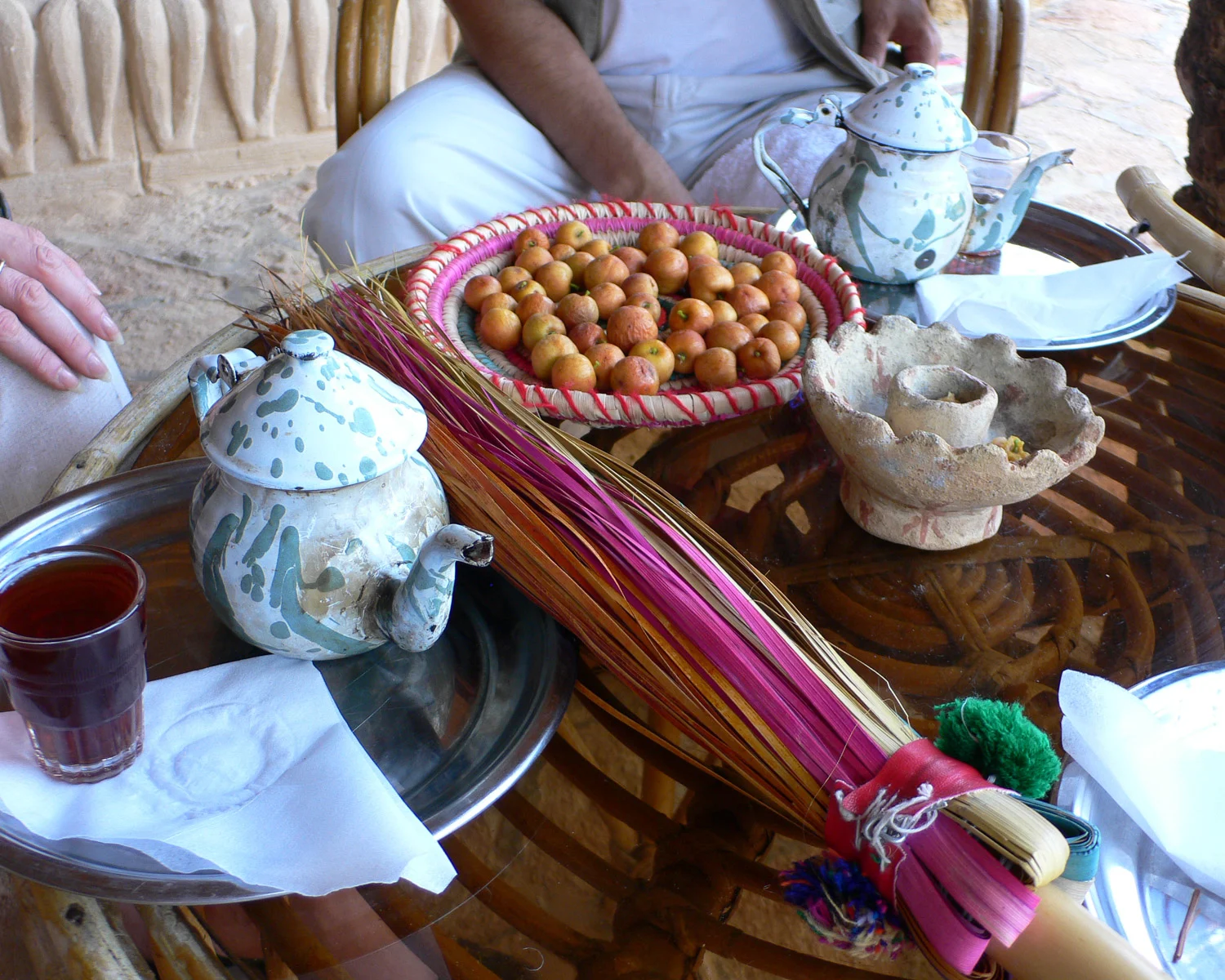
Siwa’s Cultural Museum
We visited the Siwa House, a museum of Siwa culture. A curator told us the story behind the wedding dresses worn by the Siwa women. The dress worn for the wedding night is made of embroidered green silk. However, many of the women now wear western style wedding dresses.
The creamy white silk dress with embroidery like the rays of a sun is worn on the third day after the wedding. This is when the bride’s relatives come to visit her, but the bride’s mother does not visit her until the seventh day.
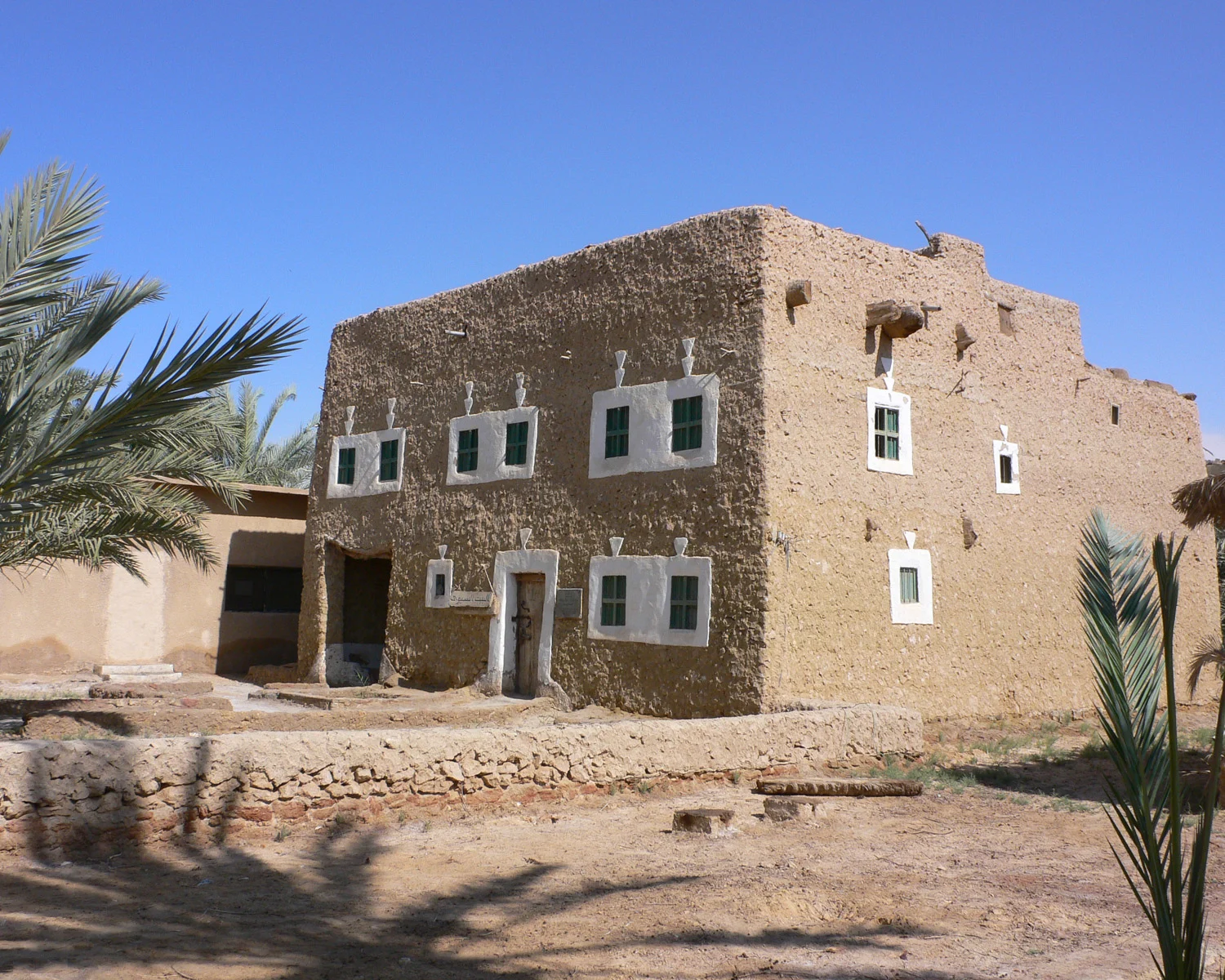
Then, she wears a black silk dress with embroidery and mother of pearl buttons for decoration. The mother of pearl buttons were brought on the caravans by traders. They would exchange wool, carpets and wheat in exchange for dates and olive oil.
Wedding traditions in Siwa
The dyes used to colour the silk fabric and the embroidery thread are made from dates. Traditional colours of Siwa are only green, yellow, orange, red and black. Each colour is produced from the dates at different stages in their ripening. Trousers and shawls are also made from natural silk embroidered with the coloured threads.
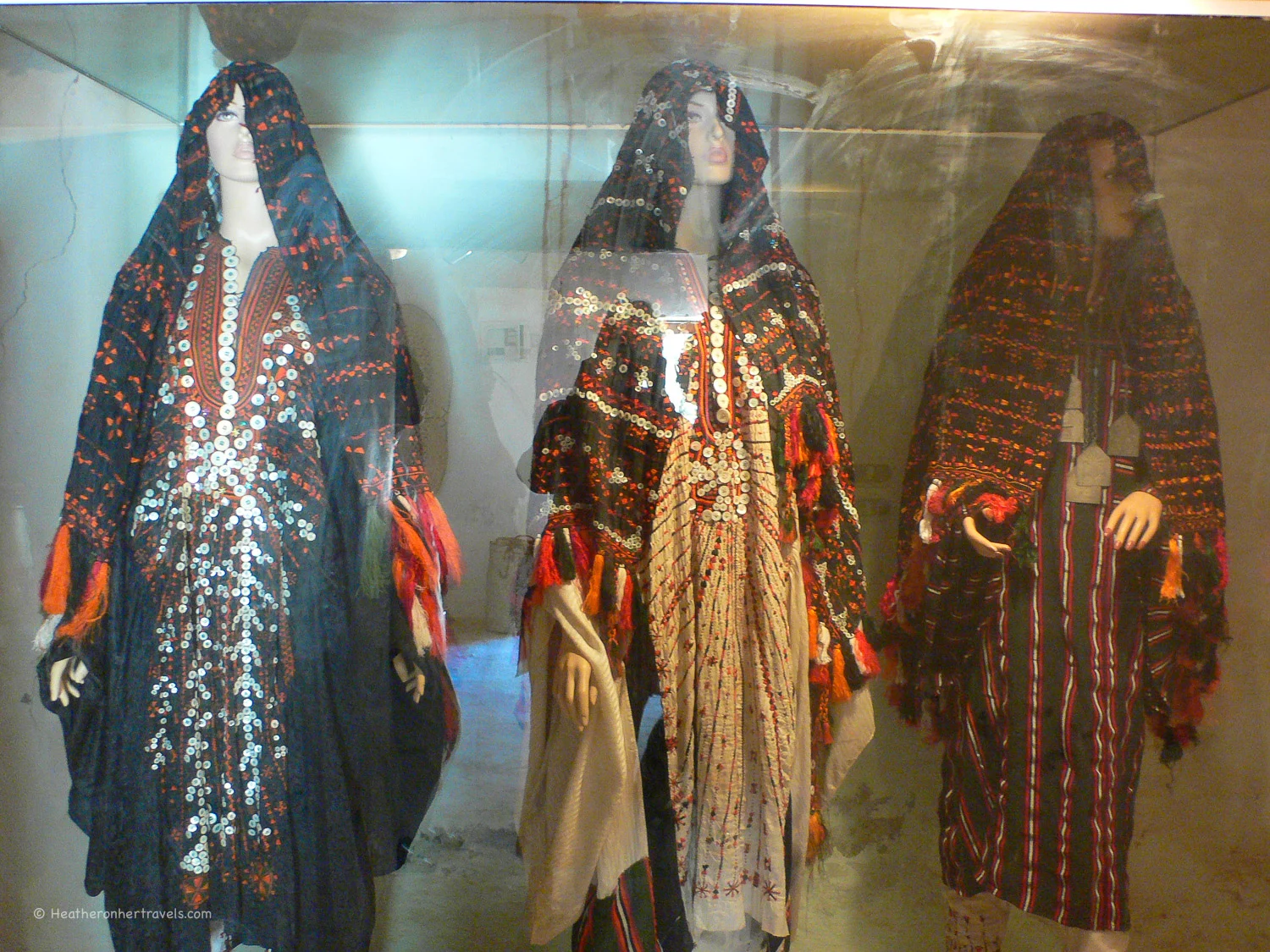
Female relatives of the bride visit her after the wedding. They are offered part of the heart of the palm as a special treat. The mother of the bride receives a whole palm heart decorated with fruit and sweets. This is considered a great sign of hospitality. The palm is considered a valuable plant due to the dates it produces.
From the age of 10 to 13 when they get engaged the young girls start to embroider their wedding dresses. They are assisted by their mothers and their aunts. Parents arrange the marriage for their children. The husband is chosen based on the knowledge of the families rather than financial considerations.
Women’s hair in Siwa is braided in different styles depending on whether the woman is single or married. The unmarried girls will have many braids on each side of their heads. Married women have 9 braids which cross over the forehead.
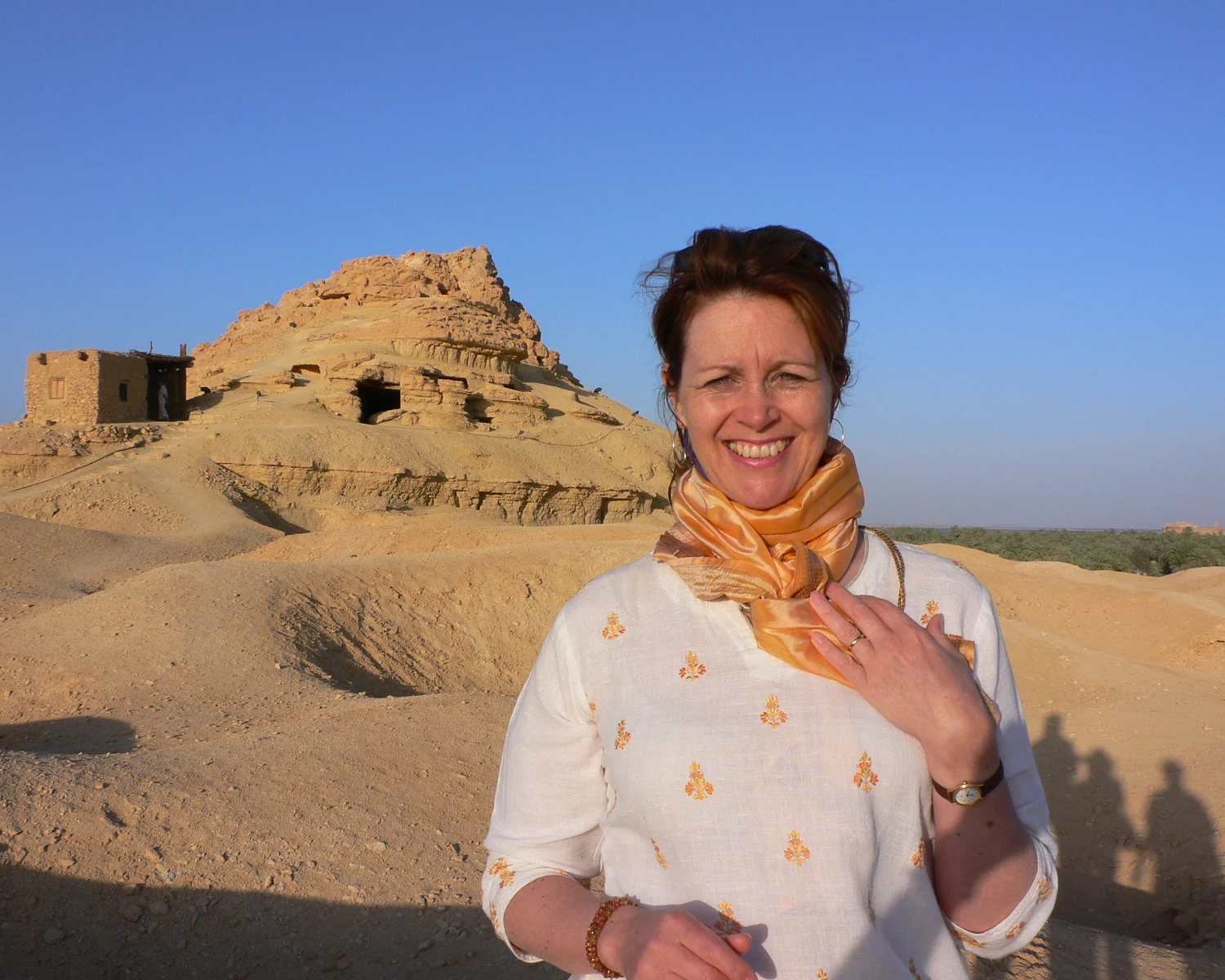
The ancient Mountain of the Dead
We also visited Gebel al Mawta or the Mountain of the Dead, the ancient burial place of Siwa. Climbing to the top of the mound, we looked down on all the rock hewn tombs below.
Some of the tombs can be viewed with a guide and are painted inside. You can hear the wind blowing at the top and from there I got a great panorama over the oasis. I could see across to the ancient fortress town of the Shali.
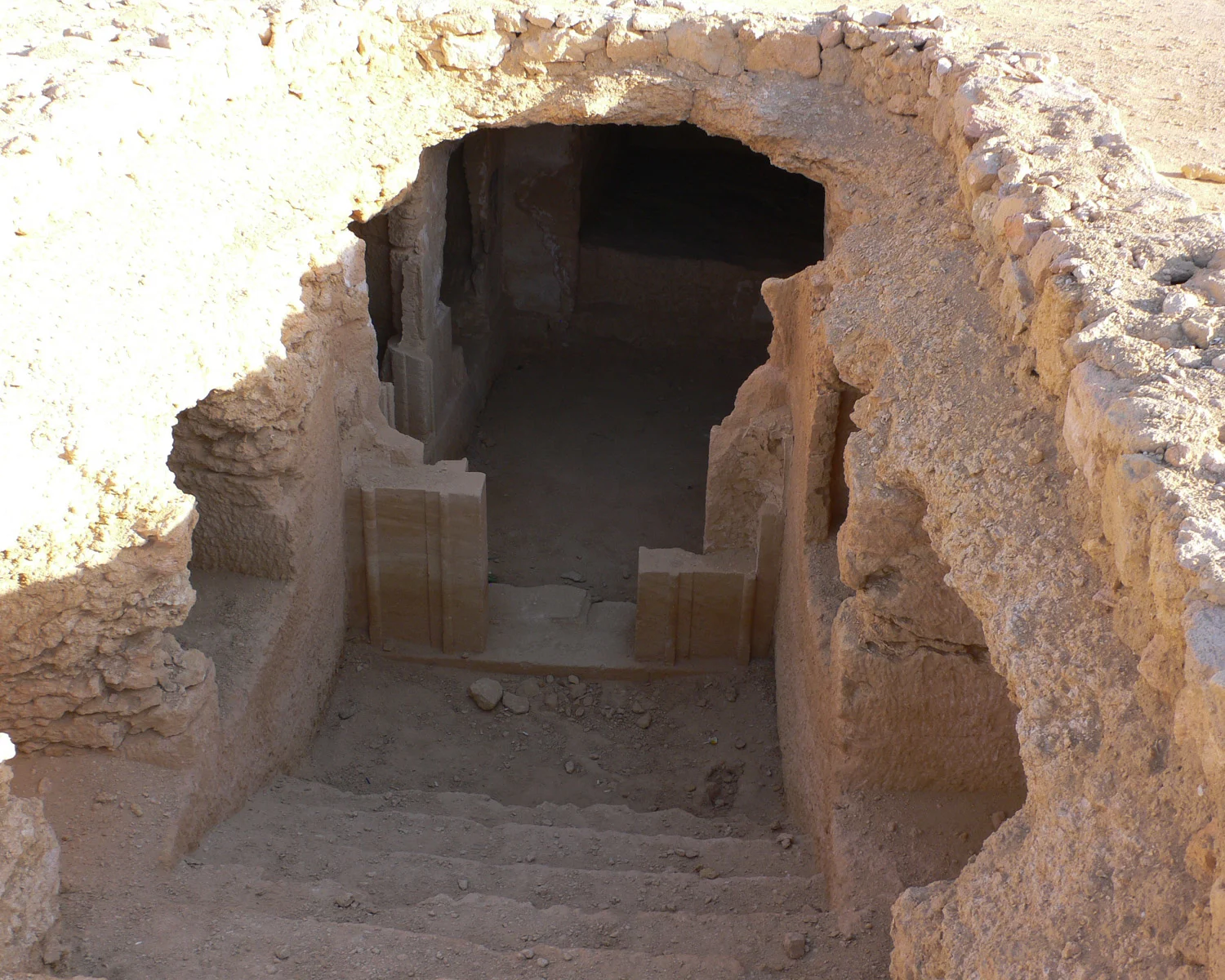
Sunset on Fatnas Island in Siwa
That evening we drove to Fatnas island to see the sunset setting over the lake. In recent years the lake level has dropped so it is more like a salt marsh.
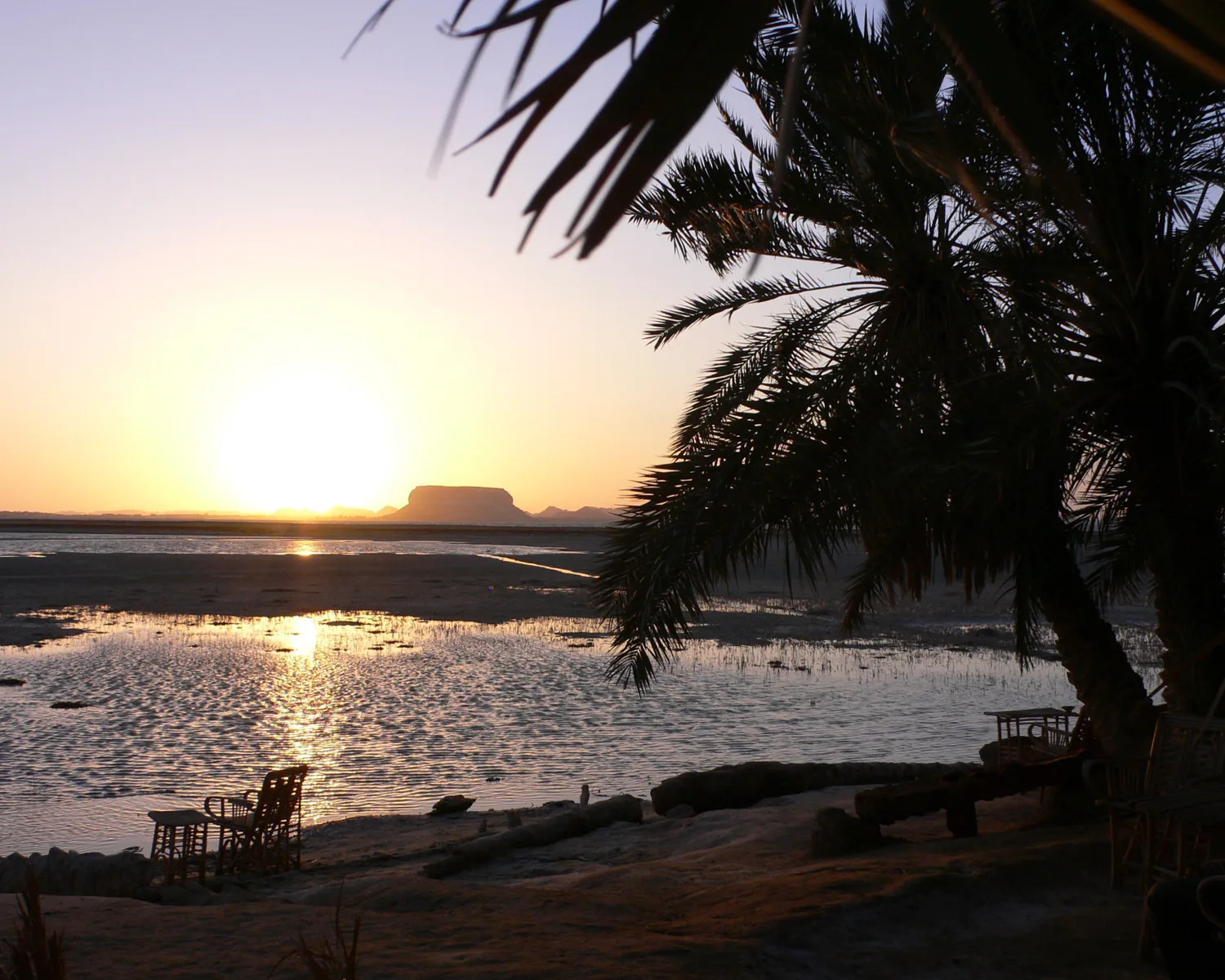
Sitting in rattan chairs we sipped sweet mint tea enjoyed he view. Across the lake is the eco-lodge where Prince Charles and Camilla stayed when they were in Siwa.
We chatted to the man who owned this land and had set up the tea kiosk as a business. He is a storyteller who had travelled all over the Middle East including performing for the Queen of Jordan. In the darkness we drank our tea under the date palms as we watched the sun go down.
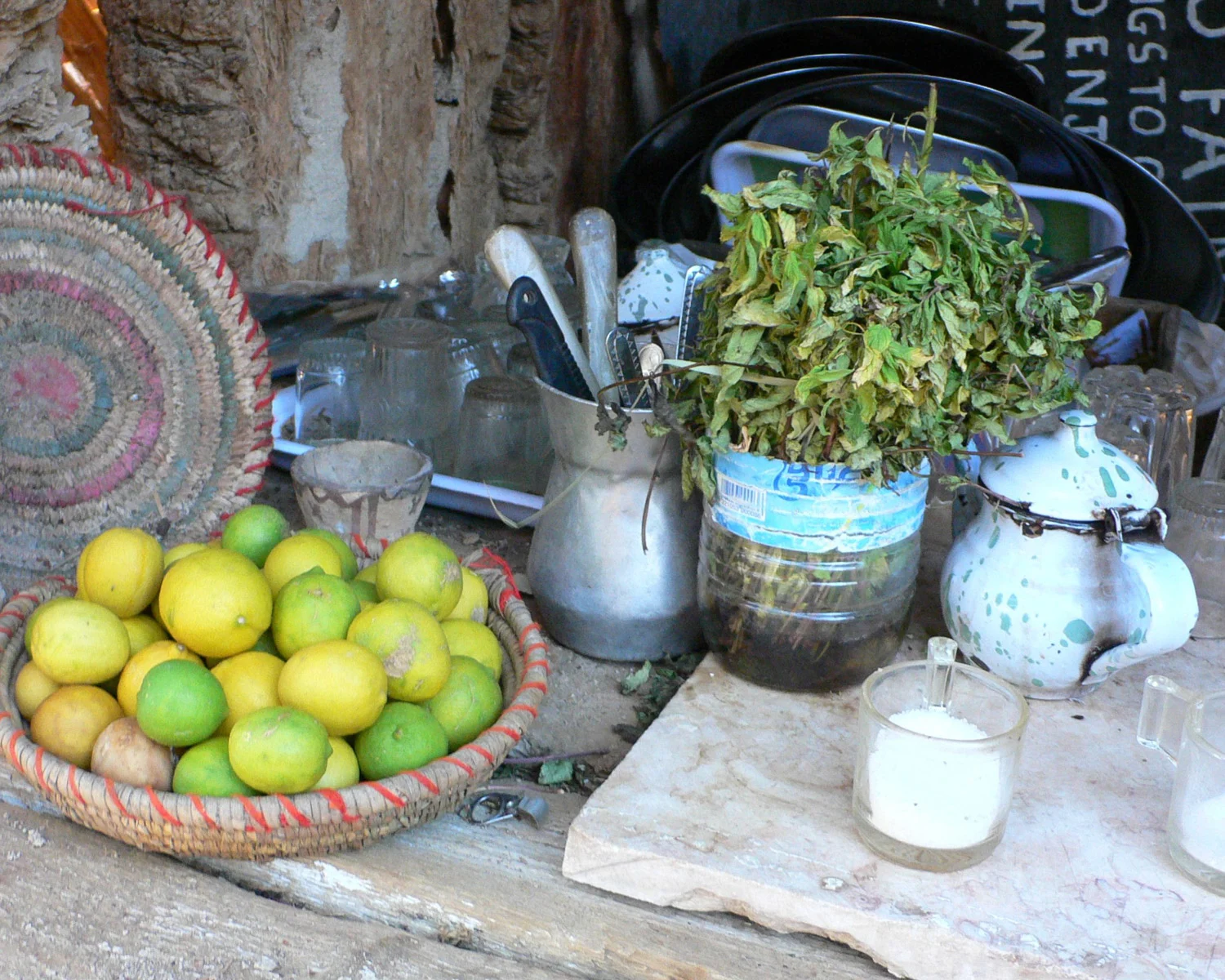
Other podcasts you may enjoy
Papua New Guinea podcast – interview with Beth Whitman
The Mongol Rally with Sherry Ott
Visiting the Christmas Markets in Munich
This article is originally published at Heatheronhertravels.com


Moheb E.
Thursday 2nd of April 2020
what a wonderful post! you really captured the beauty and authenticity of these cities. To be honest, Siwa is my favorite and I believe there is something indescribable about it. Thanks for sharing!
Jamal Aznag
Wednesday 23rd of March 2016
Egypt's have something that you’ll never forget.
Sami Rather
Tuesday 22nd of March 2016
Thank you.After reading this article i know your article its very educational.
Amir Mores
Thursday 10th of September 2015
Thank you.After reading this article i know your article very imformative.
AATravel
Saturday 25th of January 2014
Alexandria is so much relaxed than Cairo, such a wonderful place to visit and enjoy.
Heather Cowper
Sunday 26th of January 2014
@AATravel Agreed, I've not been to Cairo but I did enjoy the laid back atmosphere of Alexandria when I was there.